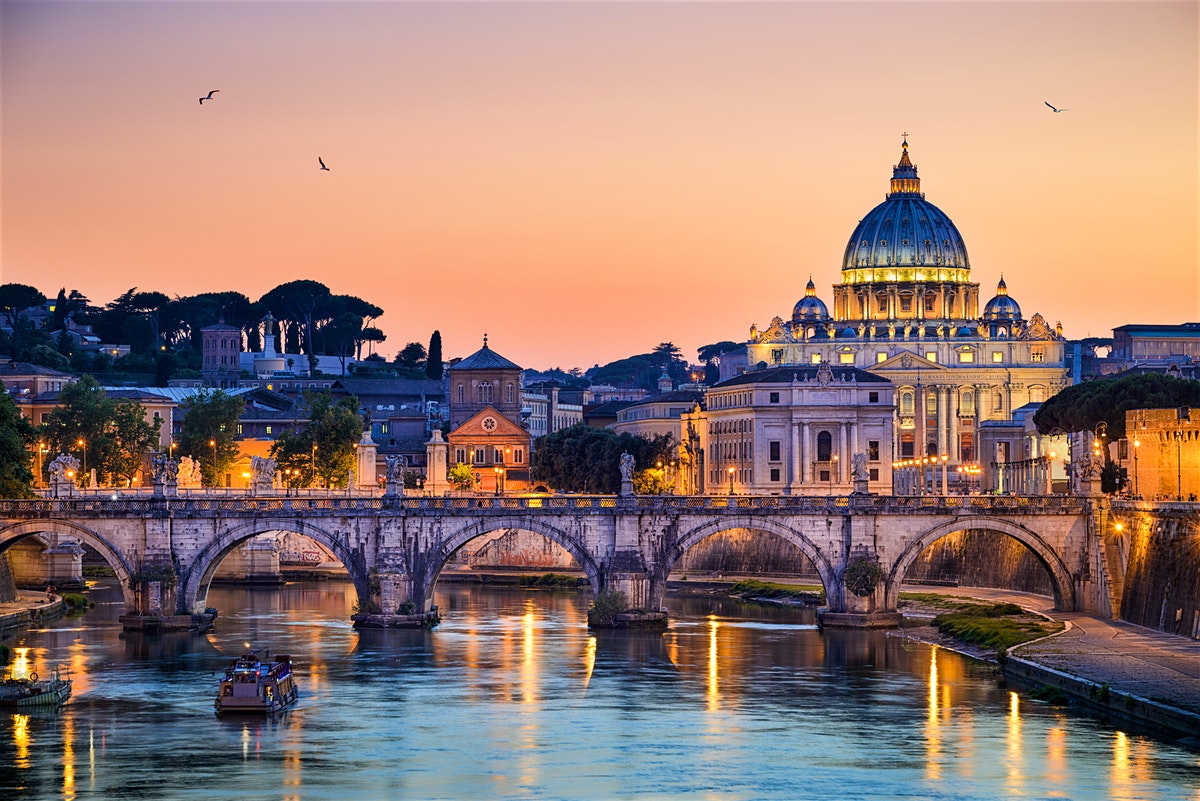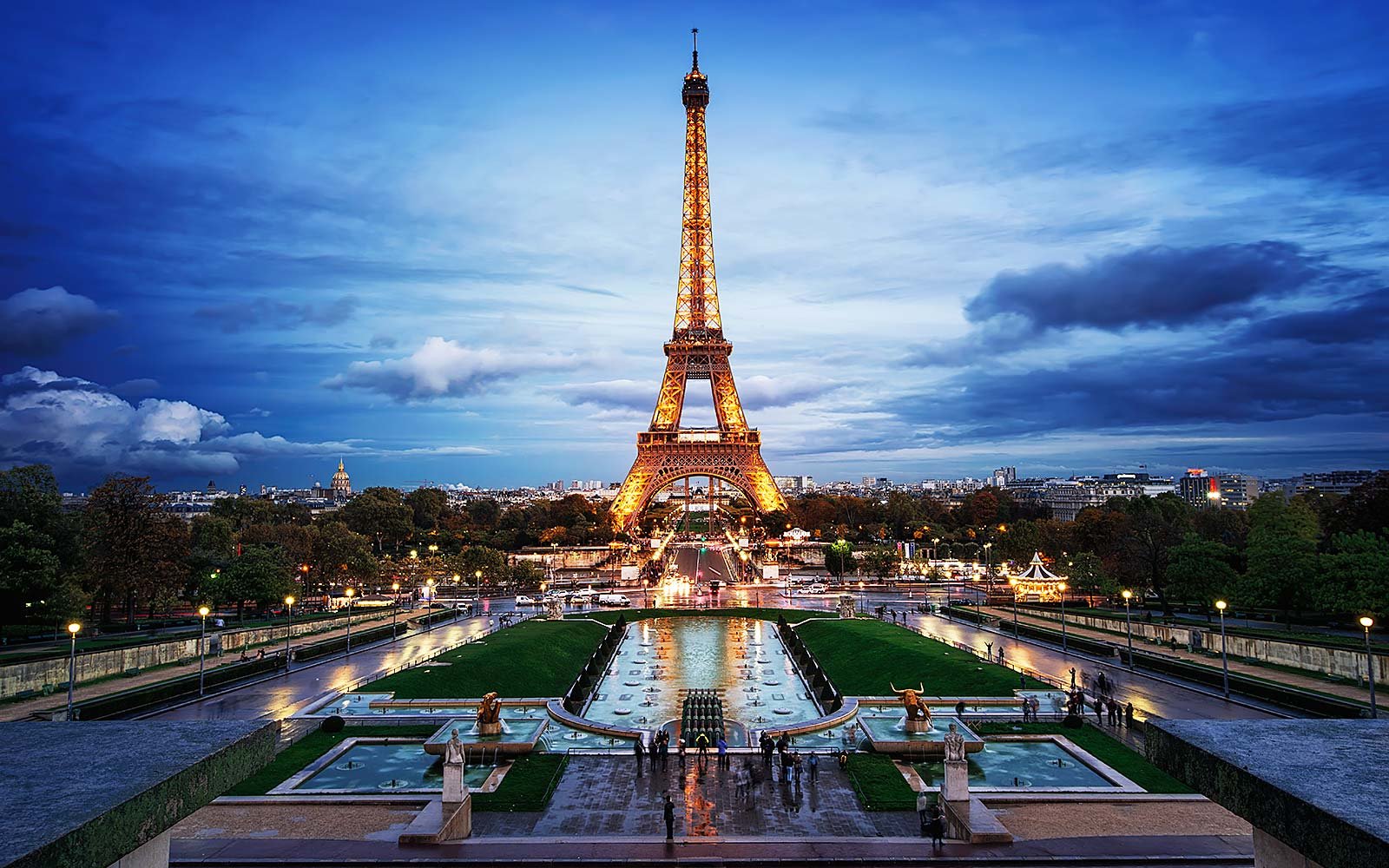
Budapest - The Pearl of Danube
Situated on both banks of the Danube, Budapest unites the colorful hills of Buda and the wide, businesslike boulevards of Pest. Though it was the site of a Roman outpost during the 1st century, the city was not officially created until 1873, when the towns of Óbuda, Pest, and Buda united. Since then, Budapest has been the cultural, political, intellectual, and commercial heart of Hungary. Budapest has suffered many ravages in the course of its long history. It was totally destroyed by the Mongols in 1241, captured by the Turks in 1541, and nearly destroyed again by Soviet troops in 1945. But this bustling industrial and cultural center survived as the capital of the People's Republic of Hungary after the war—and then, as the 1980s drew to a close, it became renowned for "goulash socialism," a phrase used to describe the state's tolerance of an irrepressible entrepreneurial spirit. Budapest has undergone a radical makeover since the free elections of 1990. Change is still in the air. As more and more restaurants, bars, shops, and boutiques open their doors—and with fashion-conscious youths parading the streets—almost all traces of communism may seem to have disappeared. But then look again: the elderly ladies selling flowers at the train station are a poignant reminder that some Hungarians have been left behind in this brave new world of competition.
What to see ???
1. Parliament - To wrap it up the magnificent Parliament building is always worth a visit. It is the biggest and most impressive building in Hungary, the construction cost was the same like if you built a city for 40000 inhabitants. It’s 268 meter long, 118 meters broad and has 691 rooms. The length of all the stairs is over 20km! So check out where and how the money was spent. There are free tours for EU citizens, if you have an EU ID. If you have time, behind the parliament along the Danube bank you will find a scatter of iron shoes along the embankment symbolizing how people were shot into the Danube during the Holocaust.

2. Chain Bridge - Lánchíd bridge – I cross this bridge every day and love looking out into the Danube especially at dusk when you can enjoy the Parliament all light up along the bank. The chain bridge is the oldest bridge in Budapest and you must also cross it! By day and night! Don´t forget to check the tongues of the big lions, standing at the beginning of the bridge. An urban legend says, that the sculptor forgot to put them.

3. Heroes square - Heroes Square – at the bottom of Andrássy út – is a fantastic square nestled between 2 art museums. During the summer nights you can find many Hungarians with roller blades blading around the square. Tucked behind Heroes’ square is a large city park complete with a castle and baths, which on occasions I make purpose trips to just outside the baths to buy some of their water (which is said to have good medical effects.)

4. Castle district - Ideally, The Castle district is at the top of my list with its cobbled streets and the opportunity to follow the rampart which is very generous with its panoramic views of lower Pest and the Buda Hills. To get there you can take a funicular up or for those with bursts of energy can wind their way up.

5. Andrássy Avenue - Andrássy Avenue is a marvelous Avenue dotted with history, cafes and is world heritage listed. You can find the most luxury shops there, the Liszt Ferenc square with lots of restaurants and some museums and galleries. Just down from Oktogon there is an outstanding building (House of Terror) which shares a page in nazi/communist occupation of Hungary. You can walk from the center up to Heroes Square, where more surprises will wait for you, it is about a 45 minutes’ walk in a relaxing way.

6. Vajdahunyad Castle - The castle by the lake in City Park looks like the one we thought of as a child, when listening to fairytales. Hardly anyone knows, that Vajdahunyad Castle (Vajdahunyad vára) was originally made of wooden planks and cardboard designs, as a historical building complex for the millenium celebrations in 1896, as a temporary exhibition. It was built after Ignác Alpár’s plans, and the Hungarians loved it so much that it was eventually built from permanent materials between 1904 and 1908. It is located on Széchenyi Island, connected with four bridges to the City Park.The complex consisting of 21 buildings showcases the evolution of Hungarian architecture. It is a collection of motives and copies of characteristic buildings throughout the whole country. From Romanesque to Renaissance, and Gothic to Baroque, Vajdahunyad Castle has it all. It gives home to romantic cloisters and a chapel, the Museum of Hungarian Agriculture, and many interesting events and activities. In the summer, you can boat around it and listen to live music on the shore, and in the winter, the sight of Vajdahunyad Castle makes ice skating in the City Park Rink unforgettable. It is no wonder, that Vajdahunyad Castle is the location of weddings and other celebrations.

7. Thermal Baths of Budapest - The Thermal Baths of Budapest are a must if you have come all the way to Hungary! Many are scattered around the city with many more being restored and reopened. My particular favorite is Széchenyi fürdő – in Városliget (City Park). I remember one time some friends of mine came to visit and there were a couple of chess enthusiast among them, in the outside pool there are the regular old men who stake their place and pass the day playing chess. However they weren’t too pleased to be beaten sometimes on their home turf.

Where to stay ???
Dramatically divided by the Danube, and reconnected by a series of elegant bridges, Buda and Pest are distinctly different. Most of the best places to stay in Budapest are located in Pest, the city proper, but as no first time visitor should miss Buda’s atmospheric Castle Hill district across the Chain Bridge, a hotel close to the great fast-flowing river is ideal for sightseeing. It’s not imperative, however, as Budapest is a compact, tranquil city and its transport system (don’t miss a trip on the charming yellow line along Andrassy to Hero Square) is extremely efficient. You’ll probably end up walking anyway: it’s the best way of catching the many fine Art Nouveau façades, hidden courtyards, enticing coffee houses and highly diverting Turkish baths along the way. The best places to stay in Budapest are all sophisticated. Many are located in stunning old buildings which have been tastefully restored and are now equipped with every modern convenience imaginable.
Service & facts
Food in Budapest - The Hungarian capital has the advantage that you can have good meals at affordable price. If you don’t fancy the luxury restaurants with designer food in miniature portions, don’t worry, there are some good-value inexpensive eateries as well. City has more than 1 500 restaurants, cafes and other eateries. New places tend to call themselves “bistro” in recent years though they mostly don’t have what make a good Parisian style bistro. Besides restaurants offering Hungarian dishes, you can taste every (or almost every) major world cuisine as well.
Price Categories - Here is a rough price guide to help you pick a restaurant that matches your budget (prices are per person for a main course without tip):
very expensive - above 4 000-5 000 or more HUF
expensive - main courses cost around 3 000-4 000 HUF
moderate - main courses cost cc. 2 000 – 3 000 HUF or less
cheap - around 1 000-1 500 HUF or less.
Transport in Budapest
Use public transport services to travel in Budapest, especially if you stay in one of the outer districts, but getting around the central districts (V., VI., parts of I., II., VII. and VIII.) might also be more convenient by public transportation. You will easily get to any sight and attraction by travelling on one of the four metro lines or the major tram lines (No. 4, 6 and 2). The bus and trolley bus service are quite extensive too. There’s also a scheduled boat service on the Danube from spring till autumn. Budapest has a fairly extensive and efficient public transport system. It is also cheaper than in most Western European cities. A wide variety of trams, buses, trolleys and metro trains run in the city. Night service is quite reliable, too.
Most Important Types of Public Transport Tickets and Passes. Single ticket 350 HUF, (450 HUF if purchased from the driver on board the vehicle): valid on all public transport vehicles for one uninterrupted trip. If you carry a bike with you (permitted only on a few vehicle types) you have to validate a single ticket for it.
Metro Section Ticket (for up to 3 stops): 300 HUF: valid for one uninterrupted trip without change on all 3 metro lines for 3 stops for 30 minutes. It does not entitle you for interruption of the trip or for return trip. Within its validity you can change lines within the metro network, but it is valid only for 3 stops altogether.
24-hour travel card (napijegy: 1 650 HUF): valid on all public transport vehicles, incl. D14 boat service, on boat services D11, D12 and D13 only on workdays for an unlimited number of trips from 0:00 to 24:00 of the day indicated on the ticket (you decide on the starting time).
72-hour travel card (turistajegy: 4 150 HUF): vaild on all public transport vehicles for an unlimited number of trips for 72 hours starting from the time and date you purchased it.
7-day travel-card (hetijegy: 4 950 HUF): vaild on all public transport vehicles from 0:00 to 24:00 till the sixth day following purchase of the card for an unlimited number of trips.
GOOD TO KNOW
Climate - The climate of Budapest is humid continental with warm or very warm summers. Winter (November until early March) can be cold and there is little sunshine. Snowfall is fairly frequent in most years, and nighttime temperatures of −15 °C (5 °F) are not uncommon from mid-December until mid-February. The spring months (March and April) see variable conditions, with a rapid increase in the average temperature. The weather in late March and April is often very agreeable during the day and fresh at night. Budapest's long summer—lasting from May until mid-September—is warm or very warm. Sudden heavy showers also occur, particularly in May and June. The autumn in Budapest (mid-September until late October) is characterized by little rain and long sunny days with moderate temperatures.
Language - Hungarian: The only official language of the country, unrelated to any of the neighbouring languages. It is the first language of some 98.9% of the total population.
Currency – currency exchange - Hungary's official currency is the Hungarian Forint (HUF). There are a number of places which accept Euros too, but the exchange rate merchants tend to use is significantly lower than what one can get at a normal exchange office ora bank. The HUF coins' denominations are 5, 10, 20, 50, 100 and 200, while the banknotes are HUF 500, 1000, 2000, 5000, 10000 and 20000.























